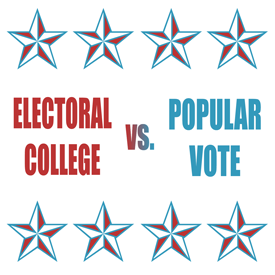As I outlined in Part II of this series, the electoral college was an ingenious compromise designed to preserve both the concepts of federalism and republicanism in the selection process for our president and vice-president. The intent was also to avoid the polarization by political parties by having non-committed electors select the best qualified individuals for these two offices. Unfortunately, this ideal only lasted for the first few election cycles.
It didn’t take long before political parties arose, and with them the bitter factionalism they tend to produce. This became evident in the election of 1800 in which the incumbent, John Adams (representing the Federalist Party) was opposed and defeated by Thomas Jefferson (representing the Democratic-Republican Party). The Federalists favored a strong central government whereas the Democratic-Republican Party favored a smaller, limited central government with the states holding most of the governmental power (sound familiar?).
By 1836 the two party system was well-established and several trends towards the system we see today had begun to emerge. One was the popular selection of the electors by all states (with the exception of South Carolina). With the move to state-wide popular vote for the electors came the “winner-take-all” approach to awarding all of the state’s electors to the candidate who won the popular vote. In 1831 the first truly “third party”, the Anti-Masonic Party, held the first presidential nominating convention in Baltimore where they selected not only their candidate for president, but also his “running mate” for the office of vice-president. The other major parties eventually followed suit, and from there it evolved to where the electors became tied to the candidates of their parties. This became more ingrained over the years until we finally ended up with our current method in the electoral selection process.
The uproar we’ve heard over the past couple of elections regarding one candidate winning the popular vote and losing the presidency in the electoral college is nothing new. There have been three instances in our history in which this has happened. In 1876 Democrat Samuel Tilden won the popular vote but lost the electoral vote to Republican Rutherford Hayes. In 1888, again the Democrat candidate, Grover Cleveland, won the popular vote yet lost to Republican Benjamin Harrison in the electoral college. Then in 2000 Democrat Al Gore lost the presidency to Republican George W. Bush in the electoral vote despite having a narrow margin in the popular vote. There have been other instances in which the winner in both categories had a narrow majority in the popular vote but a significant margin in the electoral college.
So, controversy over our process is nothing new. Next week we’ll examine the advantages of the electoral college system over that of direct popular vote.
-February 26, 2016
